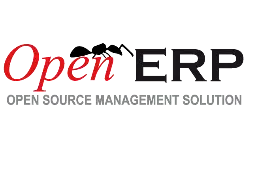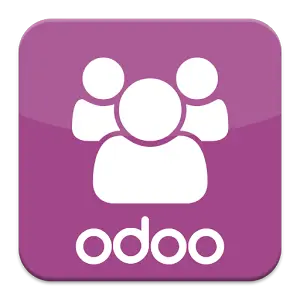Odoo's journey from a small open-source ERP called TinyERP to a multi-billion-euro business software suite is nothing short of remarkable.
Over the past two decades, Odoo has transitioned from a simple set of accounting tools for small businesses to a full-featured platform covering everything from e-commerce and manufacturing to marketing automation and AI-powered reporting. This article walks you through that journey using a timeline format, highlighting key milestones, strategic shifts, and technical achievements.
Whether you're a newcomer, client, or developer, this guide will help you understand how Odoo became what it is today.
2005 - 2008: The TinyERP Era

The story begins with TinyERP, a modest open-source project developed to help small companies manage their operations. Its early versions laid the foundation for what would become Odoo.
Versions
From 2005 to 2008
TinyERP 1.0 - 2.0
2005
TinyERP 3.0 - 4.0
2006
Highlights
Key improvements
Great Value
Initial versions released under GPL license. Simple with core ERP features
Improved UI
Improved modularity and UI enhancements.
2009 - 2013: OpenERP - The growth phase

With the introduction of OpenERP, the project expanded in scope and ambition. This era was marked by a major shift to web-based technology, a broader community, and a growing professional ecosystem.
OpenERP 5.0
First major rebrand. Introduced improved UI and web client introduced
This is when Komit's founder, Jean-Charles Drubay, started to work with Odoo.
OpenERP 6.0
GTK client deprecated. Switched from GPL to AGPL.
OpenERP 6.1
AJAX-based web interface. Better modularity.
OpenERP 7.0
Major UI overhaul and enhanced usability...
Note: During this phase, the company also began to scale globally, reaching over 100 employees and securing major funding rounds.
2014: The birth of Odoo

In 2014, the company underwent a transformative rebranding. The name Odoo was introduced to reflect its growing ambition to offer not just an ERP, but a full suite of business apps.
Odoo 8.0
Added CMS, e-commerce, POS, and BI tools. First time Odoo positioned itself beyond just ERP.
This version marked a turning point as Odoo began to position itself as a truly modular and user-friendly platform for all types of businesses.
Note: Fabien Pinckaers, the founder, explained that the name change reflected the broader ambition of offering all-in-one business applications.
2015 - 2018: Community vs Entreprise & Vertical Growth
This period saw the formal division between the Community (open-source) and Enterprise (proprietary) editions. Odoo also began investing heavily in vertical features like manufacturing, document management, and website building.
Odoo 9.0
Split into Community (LGPLv3: Free software license) and Enterprise (proprietary).
New accounting module.
Odoo 10.0
Manufacturing module overhaul.
Better PLM, MRP, and quality management tools.
Komit was launched in January 2017, between the release of the versions 10.0 and 11.0 of Odoo.
Odoo 11.0
First fully Python 3 compatible version.
Release of Odoo Studio and, improved reporting tools.
Odoo 12.0
IoT Box, multi-website support.
Document management upgrade.
Note: During this phase, the company also began to scale globally, reaching over 100 employees and securing major funding rounds.
2019 - 2022: Performance and UX Improvements
With the rise of cloud technologies, Odoo accelerated its development pace. The focus was clear: better performance, enhanced UX, and tools that match the expectations of modern businesses.
Odoo 13.0
New apps: Field Service, Rental, E-learning. Major performance improvements.
Odoo 14.0
Spreadsheet app, improved website builder, smart snippets.
Odoo 15.0
Accounting enhancements, eCommerce UX, faster load times.
Odoo 16.0
Massive performance boost (3.7x backend), spreadsheet pivot tables, custom field types.
2023 - 2024: Modern UI & Business Intelligence
Odoo enters a new era of smart automation, visual dashboards, and seamless design. The platform becomes more intuitive, scalable, and developer-friendly than ever before.
.
Odoo 17.0
Brand-new UI, spreadsheet pivot tables, smart dashboards
Odoo 18.0
Massive OCR improvements, better Documents, E-commerce, Studio improvements.
Note: Odoo 17 and 18 mark a new generation focused on intelligence, automation, and user experience.
Some corporate milestones
Company hits 100+ employees.
Deloitte Fast50 Award (1,549% growth in 5 years).
€10M raised during rebrand to Odoo.
€90M investment round.
Over 5 million users.
Revenue hits €282M. 2,200+ employees.
Odoo valued at over €5 billion with 15+ million users.
Conclusion
Odoo's evolution reflects more than just software updates. It tells a broader story of adaptability, vision, and community-driven innovation.
The shift from open-source roots to a dual licensing model reveals how the platform balanced openness without compromising its economic sustainability.
The expansion of app coverage illustrates Odoo’s mission to serve as an all-in-one solution for modern enterprises. With a new version released every year, Odoo continuously improves its platform and rapidly adopts proven technologies, each version reflects a commitment to innovation and usability.
Looking ahead, Odoo 19 (expected in late 2025) is set to introduce integration of AI technologies, helping businesses automate smarter, faster, and more accurately. You can already see the AI features Fabien Pinckaers, CEO of Odoo showcased to us on LinkedIn here
Whether you’re a developer, consultant, or business owner, understanding this timeline helps you track feature availability across versions, build client trust with historical insights, and position your services in sync with Odoo’s roadmap
Thinking About Odoo implementation or upgrade with Komit?
